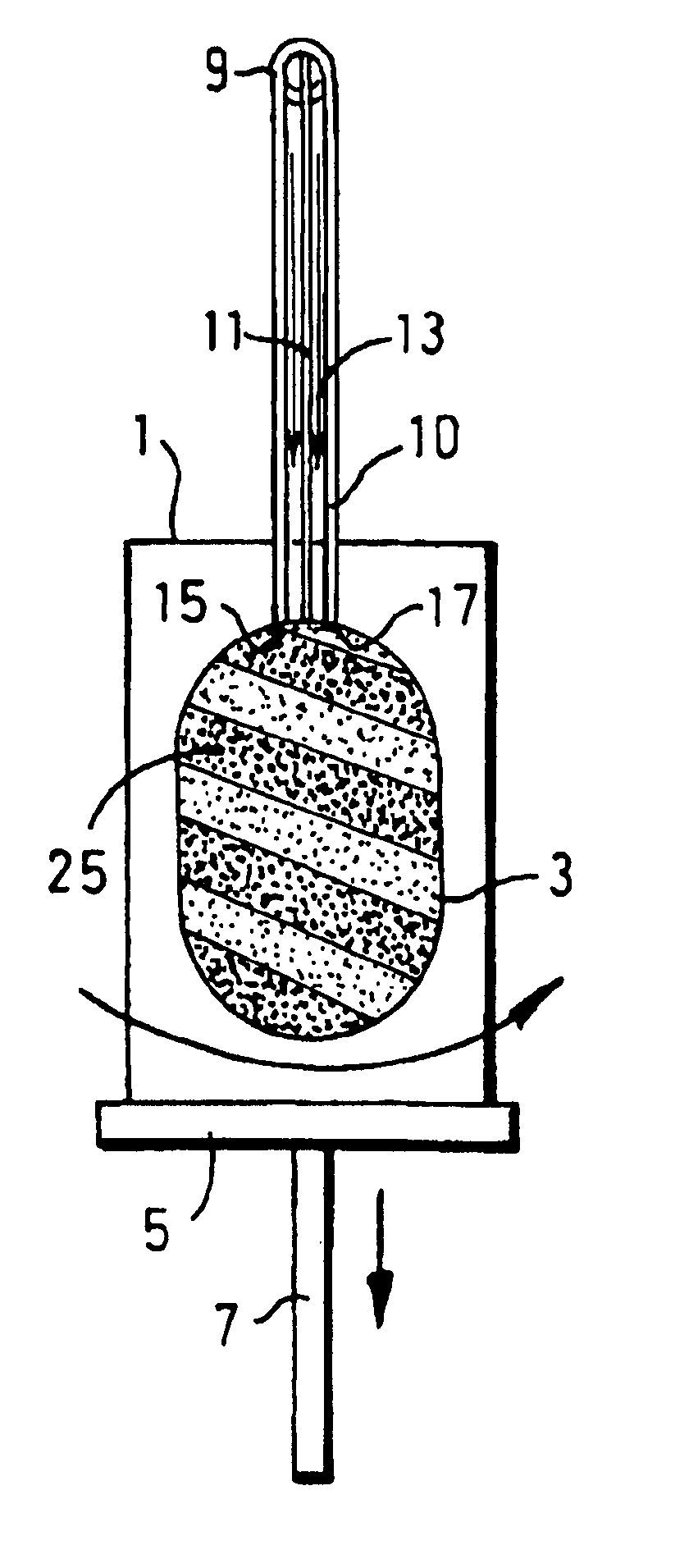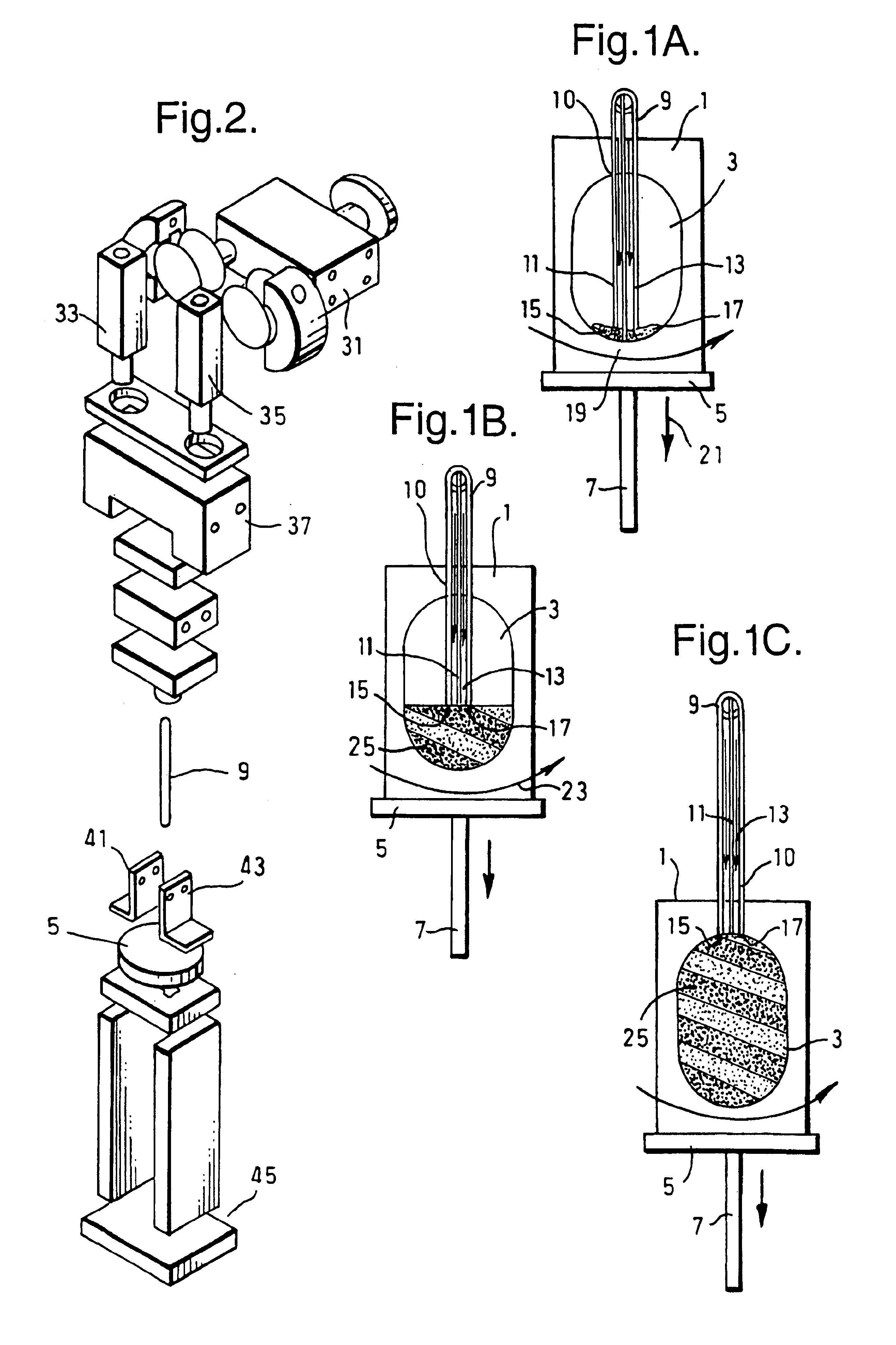Process for the production of a detergent bar
a technology of detergent bars and detergent bars, applied in the direction of other chemical processes, soap solution manufacturing, manufacturing tools, etc., can solve the problems of die blockage, poor release of detergent bars from dies, and bar splitting in us
- Summary
- Abstract
- Description
- Claims
- Application Information
AI Technical Summary
Benefits of technology
Problems solved by technology
Method used
Image
Examples
Embodiment Construction
The present invention is based on use of an injection moulding process for the manufacture of detergent bars. Further details of suitable injection moulding techniques are given below. However, the minimum requirement for the process and apparatus according to the present invention is use of equipment comprising a mould and nozzle means having two or more orifices (e.g. nozzles) for separate injection of the respective components.
Preferably, the nozzle means is inserted inside the cavity through an opening in the mould, before injection commences. Then, it is withdrawn during injection. Withdrawal may be effected by moving the nozzle means relative to the mould or by moving the mould relative to the nozzle means, or both.
There are two ways in which the pattern of the two or more components may be varied during manufacture. The first is by controlling the relative motion between the nozzle means and the mould. The second is by varying the relative rates of injection of the different ...
PUM
| Property | Measurement | Unit |
|---|---|---|
| Percent by mass | aaaaa | aaaaa |
| Viscosity | aaaaa | aaaaa |
| Composition | aaaaa | aaaaa |
Abstract
Description
Claims
Application Information
 Login to View More
Login to View More - R&D
- Intellectual Property
- Life Sciences
- Materials
- Tech Scout
- Unparalleled Data Quality
- Higher Quality Content
- 60% Fewer Hallucinations
Browse by: Latest US Patents, China's latest patents, Technical Efficacy Thesaurus, Application Domain, Technology Topic, Popular Technical Reports.
© 2025 PatSnap. All rights reserved.Legal|Privacy policy|Modern Slavery Act Transparency Statement|Sitemap|About US| Contact US: help@patsnap.com



